Popular categories
Looking for a yarn?

50% Cotton, 50% Polyester
from 1.15 £ /50g
Order DROPS Cotton Light from Wool Warehouse Direct Ltd

|
DROPS Cotton Light uni colour 50% Cotton, 50% Polyester |
1.15 £ /50g |
Order |
Clicking the ORDER button will redirect you to Wool Warehouse Direct Ltd website
Order DROPS Needles & Hooks
Clicking the ORDER button will redirect you to Wool Warehouse Direct Ltd website
The yarn cost is calculated from the pattern’s smallest size and the yarn’s cheapest product type. Looking for an even better price? You might find it on the DROPS Deals!
Country Rose
Crochet DROPS jacket in "Cotton Light" and "Glitter". Size S-XXXL.
DROPS design: Pattern no CL-009
Yarn group B
--------------------------------------------------------
Size: S/M - L - XL - XXL/XXXL
Chest measurements: approx. 80-96-106-118 cm
Materials: DROPS COTTON LIGHT from Garnstudio
450-500-550-600 g colour no 05, light pink
And use:
DROPS GLITTER from Garnstudio
20 g (2 spools) colour no 01, gold
DROPS CROCHET HOOK SIZE 4 mm – or size needed to get 17 tr/dc = width 10 cm.
-------------------------------------------------------
Alternative Yarn – See how to change yarns here
Yarn Groups A to F – Use the same pattern and change the yarn here
Yarn usage using an alternative yarn – Use our yarn converter here
-------------------------------------------------------
Women Jackets & Cardigans Bolerosasymmetric circle lace sewn in sleeves shawl collar

50% Cotton, 50% Polyester
from 1.15 £ /50g
Order DROPS Cotton Light from Wool Warehouse Direct Ltd

|
DROPS Cotton Light uni colour 50% Cotton, 50% Polyester 1.15 £ /50g Order |
Clicking the ORDER button will redirect you to Wool Warehouse Direct Ltd website
Order DROPS Needles & Hooks
Clicking the ORDER button will redirect you to Wool Warehouse Direct Ltd website
The yarn cost is calculated from the pattern’s smallest size and the yarn’s cheapest product type. Looking for an even better price? You might find it on the DROPS Deals!
- English (UK/cm)
- Česky - not translated
- Dansk
- Deutsch
- Eesti keel
- English (US/in)
- Español
- Français
- Íslenska - not translated
- Italiano
- Magyar
- Nederlands
- Norsk
- Polski
- Português
- Suomi
- Svenska
- English (UK/cm), Bulgaria
- English (UK/cm), Croatia
- English (UK/cm), Greece
- English (UK/cm), Latvia
- English (UK/cm), Lithuania
- English (UK/cm), Romania
- English (UK/cm), Slovenia
- Česky, Slovakia - not translated
Pattern instructions
Replace first tr on every row with 3 ch.
Replace first dc on every round with 1 ch. Finish every dc round with 1 sl st in 1st ch from beg of round.
Replace first tr on every round with 3 ch. Finish every tr round with 1 sl st in 3rd ch from beg of round.
INCREASE TIP:
Inc by working 2 tr in first and last tr on row.
DECREASE TIP:
Dec at beg of row as follows: Work sl st over no of tr to be dec.
Dec at end of row as follows: When no of tr to be dec remains, turn piece.
--------------------------------------------------------
BACK PIECE:
Work 78-86-94-99 loose ch on hook size 4 mm with 1 thread Cotton Light and 1 thread Glitter (= 2 threads). Work 1 tr in 4th ch from hook, * 1 tr in each of the next 3 ch, skip 1 ch *, repeat from *-*, and finish with 1 tr in each of the last 2-2-2-3 ch = 58-64-70-74 tr. Then work 1 tr in every tr - READ CROCHET INFO. When piece measures 7 cm, inc 1 tr in each side – READ INCREASE TIP, repeat inc when piece measures 15 cm = 62-68-74-78 tr. Work until piece measures 22-23-24-25 cm.
EDGE PIECE:
Work 1 tr in every tr on the upper side of back piece, work 56-58-60-64 ch, 1 tr in every tr from bottom side of back piece, work 56-58-60-64 ch and finish with 1 sl st in 1st tr on upper side of back piece. Work 1 tr in every tr from back piece, in ch-loops work 42-44-46-48 tr = 204-220-236-248 tr. Continue to work in the round as follows:
ROUND 1: 1 tr in first tr, * 1 ch, skip 1 tr, 1 tr in next tr *, repeat from *-* and finish with 1 ch, skip 1 tr and work 1 sl st on beg of round.
ROUND 2: 1 dc in every tr and 1 dc in every ch.
ROUND 3: 1 dc in every dc.
Repeat these 3 rounds, AT THE SAME TIME when edge measures 5, 10 and 15 cm (adjust so that this is a round with dc), inc 30-30-30-32 dc evenly on round – READ INCREASE TIP = 294-310-326-344 dc. When edge measures 17-18-19-20 cm (adjust so that next round is a round with dc), work 1 dc row while AT THE SAME TIME inc 0-2-4-4 dc evenly = 294-312-330-348 dc. Then work diagram M.1. NOTE! Start to work on the row marked with 1 in the diagram. Work diagram M.1 1 time vertically, cut and fasten the thread.
SLEEVE:
Work 67-72-72-77 loose ch on hook size 4 mm with 1 thread Cotton Light and 1 thread Glitter (= 2 threads). Work 1 tr in 4th ch from hook (= 2 tr), * skip 1 ch, 1 tr in each of the next 4 ch *, repeat from *-* and finish by skipping 1 ch and work 1 tr in each of the last 2 ch = 52-56-56-60 tr. Work 1 tr in every tr back and forth, AT THE SAME TIME inc 1 tr in each side on every row a total of 13-14-16-17 times, read INCREASE TIP = 78-84-88-94 tr.
When piece measures 24-24-22-20 cm (shorter measurements in the larger sizes because of broader shoulder width), dec for sleeve cap in each side on every row - READ DECREASE TIP: 4 tr 1 time, then 3-3-2-2 tr in each side until piece measures 31-33-33-34 cm, now dec 4 tr 1 time in each side. Cut and fasten the thread. Sew under arm seam with neat little stitches. Work around the bottom of sleeve as follows:
Work 1 round with 1 dc in every tr, while at the same time inc 2-4-4-0 dc evenly = 54-60-60-60 dc. Then work diagram M.1 1 time vertically. Cut and fasten the thread.
ASSEMBLY:
Sew in sleeves.
This pattern has been corrected. Click here to see the correction/s.
SLEEVE:
...AT THE SAME TIME inc 1 tr in each side on every row a total of 13-14-16-17 times..
Diagram

|
= dc |

|
= ch |

|
= tr |

What can you do with our patterns? You can share DROPS patterns online, using the pattern original picture, materials, name and number. But you are NOT ALLOWED to reproduce the complete pattern digitally in any way. Yarn stores are welcome to use the DROPS pattern database to promote the sale of our assortment. You can print out our patterns, make as many copies as you’d like. The only thing we ask is that you don't make any changes / additions to the original printed document. And that the patterns according to the DROPS philosophy are given out to the consumers for free. Editorials that wish to publish our patterns in printed books or magazines can contact us for more information. The sale of garments based on DROPS patterns is permitted as long as they are sold as single items or per order. Further commercial use of the patterns is not permitted. It has to be clearly stated that the garment is made based on a design from DROPS DESIGN. The use of clothing labels of which DROPS DESIGN forms part is conditioned by the inclusion of the following text: “A DROPS DESIGN made by …..”. The use of DROPS photos for marketing purposes/sales is only permitted in connection with the use/sale of DROPS products. The photos may not be cut or edited and the logo should be clearly visible.
We reserve the right to withdraw the permission for use of our patterns at any time, notwithstanding the reason.
Each of our patterns has specific tutorial videos to help you.
These step-by-step tutorials might also help you:
Why is the knitting/crochet tension so important?
Knitting tension is what determines the final measurements of your work, and is usually measured per 10 x 10 cm. It is provided like so: number of stitches in width x number of rows in height - eg: 19 stitches x 26 rows = 10 x 10 cm.
The knitting tension is very individual; some people knit/crochet loosely while others work tightly. You adjust the knitting tension with the needle size, which is why the suggested needle size is only meant as a guide! You need to adjust this (up or down) to ensure that YOUR knitting tension matches the knitting tension provided in the pattern. If you work with a different knitting tension than provided you will have a different yarn consumption, and your work will have different measurements than what the pattern suggests.
The knitting tension also determines which yarns can replace each other. As long as you achieve the same knitting tension you can replace one yarn with another.
See DROPS lesson: How to measure your tension/gauge
See DROPS video: How to make a gauge tension swatch
How do I know how many balls of yarn I need?
The required amount of yarn is provided in grams, eg: 450 g. To calculate how many balls you’ll need you first need to know how many grams are in 1 ball (25g, 50g or 100g). This information is available if you click on the individual yarn quality on our pages. Divide the amount required with the amount of each ball. For example, if each ball is 50g (the most common amount), the calculation will be as follows: 450 / 50 = 9 balls.
Can I use a different yarn than what the pattern suggests?
The important thing when changing from one yarn to another is that the knitting/crochet tension remains the same. This is so that the measurements of the finished piece will be the same as on the sketch provided. It is easier to achieve the same knitting tension using yarns from the same yarn group. It is also possible to work with multiple strands of a thinner yarn to achieve the knitting tension of a thicker one. Please try our yarn converter. We recommend you to always work a test swatch.
Please NOTE: when changing yarn the garment might have a different look and feel to the garment in the photo, due to individual properties and qualities of each yarn.
See DROPS lesson: Can I use a different yarn than the one mentioned in the pattern?
What are the yarn groups?
All our yarns are categorised into yarn groups (from A to F) according to thickness and knitting tension – group A contains the thinnest yarns and group F the thickest. This makes it easier for you to find alternative yarns to our patterns, should you wish to switch yarn. All yarns within the same group have a similar knitting tension and can easily replace each other. However, different yarn qualities have different structures and properties which will give the finished work a unique look and feel.
How do I use the yarn calculator?
At the top of all our patterns you’ll find a link to our yarn calculator, which is a helpful tool should you wish to use a different yarn than suggested. By filling in the yarn quality you wish to replace, the amount (in your size) and number of strands, the calculator will present good alternative yarns with the same knitting tension. Additionally it will tell you how much you’ll require in the new qualities and whether you’ll need to work with multiple strands. Most skeins are 50g (some are 25g or 100g).
If the pattern is worked with multiple colours, every colour will have to be calculated separately. Similarly, if the pattern is worked with several strands of different yarns (for example 1 strand Alpaca and 1 strand Kid-Silk) you will have to find alternatives for each, individually.
Why do you show discontinued yarns in the patterns?
Since different yarns have different qualities and textures we have chosen to keep the original yarn in our patterns. However, you can easily find options among our available qualities by using our yarn calculator, or simply pick a yarn from the same yarn group.
It is possible that some retailers still have discontinued yarns in stock, or that someone has a few skeins at home that they would like to find patterns for.
The yarn calculator will provide both alternative yarn as well as required amount in the new quality.
What size should I knit?
If you think it's hard to decide what size to make, it can be a good idea to measure a garment you own already and like the size of. Then you can pick the size by comparing those measures with the ones available in the pattern's size chart.
You'll find the size chart at the bottom of the pattern.
See DROPS lesson: How to read size chart
Why do I get the wrong knitting tension with the suggested needle size?
The needle size provided in the pattern serves only as a guide, the important thing is to follow the knitting tension. And since knitting tension is very individual, you will have to adjust the needle size to ensure that YOUR tension is the same as in the pattern – maybe you’ll have to adjust 1, or even 2 needle sizes, up or down to achieve the correct tension. For this, we recommend that you work test swatches.
Should you work with a different knitting tension than the one provided, the measurements of the finished garment might deviate from the measurement sketch.
See DROPS lesson: How to measure your tension/gauge
See DROPS video: How to make a tension/gauge swatch
Why is the pattern worked top-down?
Working a garment top-down provides more flexibility and room for personal adjustment. For example it is easier to try the garment on while working, as well as making adjustments to length of yoke and shoulder caps.
The instructions are carefully explaining every step, in the correct order. Diagrams are adjusted to the knitting direction and are worked as usual.
How do I work according to a knitting diagram?
The diagram depicts all rows/rounds, and every stitch seen from the right side. It is read from bottom to top, from right to left. 1 square = 1 stitch.
When working back and forth, every other row is worked from the right side and every other row is worked from the wrong side. When working from the wrong side, the diagram will have to be worked reversed: from left to right, knit stitches are purled, purl stitches are knit etc.
When working in the round every round is worked from the right side and the diagram are worked from right to left on all rounds.
See DROPS lesson: How to read knitting diagrams
How do I work according to a crochet diagram?
The diagram depicts all rows/rounds, and every stitch seen from the right side. It is worked from bottom to top, from right to left.
When working back and forth every other row is worked from the right side: from right to left and every other row is worked from the wrong side: from left to right.
When working in the round, every row in the diagram are worked from the right side, from right to left.
When working a circular diagram you start in the middle and work your way outwards, counter clockwise, row by row.
The rows usually start with a given number of chain stitches (equivalent to the height of the following stitch), this will either be depicted in the diagram or explained in the pattern.
See DROPS lesson: How to read crochet diagrams
How do I work several diagrams simultaneously on the same row/round?
Instructions for working several diagrams after each other on the same row/round, will often be written like so: “work A.1, A.2, A.3 a total of 0-0-2-3-4 times". This means you work A.1 once, then A.2 is worked once, and A.3 is repeated (in width) the number of times provided for your size – in this case like so: S = 0 times, M = 0 times, L=2 times, XL= 3 times and XXL = 4 times.
The diagrams are worked as usual: begin with the first row in A.1, then work the first row in A.2 etc.
See DROPS lesson: How to read knitting diagrams
See DROPS lesson: How to read crochet diagrams
Why are the sleeves shorter in larger sizes?
The total width of the garment (from wrist-to-wrist) will be larger in the larger sizes, despite the actual sleeves being shorter. The larger sizes have longer sleeve caps and wider shoulders, so there will be a good fit in all sizes.
Where on the garment is the length measured?
The measurement sketch/schematic drawing provides information regarding the full length of the garment. If it’s a jumper or a jacket the length is measured from the highest point on the shoulder closest to the neckline, and straight down to the bottom of the garment. It is NOT measured from the tip of shoulder. Similarly, the length of yoke is measured from the highest point on the shoulder and down to where yoke is split into body and sleeves.
On a jacket measures are never taken along bands, unless specifically stated. Always measure inside band stitches when measuring the length.
See DROPS lesson: How to read a schematic drawing
What is a repeat?
Diagrams are often repeated on the round or in height. 1 repeat is the diagram the way it appears in the pattern. If it says to work 5 repeats of A.1 in the round, then you work A.1 a total of 5 times after/next to each other in the round. If it says to work 2 repeats of A.1 vertically/in height you work the entire diagram once, then begin again at the start and work the entire diagram one more time.
Why does the piece start with more chain stitches than it’s worked with?
Chain stitches are slightly narrower than other stitches and to avoid working the cast-on edge too tight, we simply chain more stitches to begin with. The stitch count will be adjusted on the following row to fit the pattern and measurement sketch.
Why increase before the rib edge when the piece is worked top-down?
The rib edge is more elastic and will contract slightly compared to, for example, stocking stitch. By increasing before the rib edge, you avoid a visible difference in width between the rib edge and the rest of the body.
Why increase in the cast-off edge?
It’s very easy to cast off too tightly, and by making yarn overs while casting off (and simultaneously casting these off) you avoid a too tight cast off edge.
See DROPS video: How to bind off with yarn overs (yo)
How do I increase/decrease on every 3rd and 4th row/round alternately?
To achieve an even increase (or decrease) you can increase on, for example: every 3rd and 4th row alternately, like so: work 2 rows and increase on the 3rd row, work 3 rows and increase on the 4th. Repeat this until the increase is complete.
See DROPS lesson: Increase or decrease 1 st on every 3rd and 4th row alternately
How can I work a jacket in the round instead of back and forth?
Should you prefer to work in the round instead of back and forth, you may of course adjust the pattern. You’ll need to add steeks mid-front (usually 5 stitches), and follow the instructions. When you would normally turn and work from the wrong side, simply work across the steek and continue in the round. At the end you’ll cut the piece open, pick up stitches to work bands, and cover the cut edges.
See DROPS video: How to knit steeks and cut open
Can I work a jumper back and forth instead of in the round?
Should you prefer to work back and forth instead of in the round, you may of course adjust the pattern so you work the pieces separately and then assemble them at the end. Divide the stitches for the body in 2, add 1 edge stitch in each side (for sewing) and work the front and back pieces separately.
See DROPS lesson: Can I adapt a pattern for circular needles into straight needles?
Why is the pattern slightly different than what I see in the photo?
Pattern repeats can vary slightly in the different sizes, in order to get the correct proportions. If you’re not working the exact same size as the garment in the photo, yours might deviate slightly. This has been carefully developed and adjusted so that the complete impression of the garment is the same in all sizes.
Make sure to follow instructions and diagrams for your size!
How do I make a women’s size garment into a men’s size one?
If you have found a pattern you like which is available in women’s size it’s not very difficult to convert it to men’s size. The biggest difference will be the length of sleeves and body. Start working on the women size that you think would fit across the chest. The additional length will be worked right before you cast off for the armhole/sleeve cap. If the pattern is worked top-down you can add the length right after the armhole or before the first decrease on sleeve.
Regarding additional yarn amount, this will depend on how much length you add, but it is better with a skein too many than too few.
How do I prevent a hairy garment from shedding?
All yarns will have excess fibres (from production) that might come off as lint or shedding. Brushed yarns (ie hairier yarns) have more of these loose, excess fibres, causing more shedding.
Shedding also depends on what is worn under or over the garment, and whether this pulls at the yarn fibres. It’s therefore not possible to guarantee that there will be no shedding
Below are some tips on how to get the best result when working with hairier yarns:
1. When the garment is finished (before you wash it) shake it vigorously so the looser hairs come off. NOTE: do NOT use a lint roller, brush or any method that pulls at the yarn.
2. Place the garment in a plastic bag and put it in your freezer - the temperature will cause the fibres to become less attached to each other, and excess fibres will come off easier.
3. Leave in the freezer for a few hours before taking it out and shaking it again.
4. Wash the garment according to the instructions on the yarn label.
Why does my garment pill?
Pilling is a natural process that happens to even the most exclusive of fibers. It's a natural sign of wear and tear that is hard to avoid, and that is most visible in high friction areas of your garment like a sweater's arms and cuffs.
You can make your garment look as new by removing the pilling, using a fabric comb or a pill/lint remover.
In the meantime, you can read the questions and answers that others have left to this pattern or join the DROPS Workshop on Facebook to get help from fellow knitters/crocheters!
Country Rose |
||||||||||
 |
 |
|||||||||
Crochet DROPS jacket in "Cotton Light" and "Glitter". Size S-XXXL.
DROPS 138-6 |
||||||||||
|
CROCHET INFO: Replace first tr on every row with 3 ch. Replace first dc on every round with 1 ch. Finish every dc round with 1 sl st in 1st ch from beg of round. Replace first tr on every round with 3 ch. Finish every tr round with 1 sl st in 3rd ch from beg of round. INCREASE TIP: Inc by working 2 tr in first and last tr on row. DECREASE TIP: Dec at beg of row as follows: Work sl st over no of tr to be dec. Dec at end of row as follows: When no of tr to be dec remains, turn piece. -------------------------------------------------------- BACK PIECE: Work 78-86-94-99 loose ch on hook size 4 mm with 1 thread Cotton Light and 1 thread Glitter (= 2 threads). Work 1 tr in 4th ch from hook, * 1 tr in each of the next 3 ch, skip 1 ch *, repeat from *-*, and finish with 1 tr in each of the last 2-2-2-3 ch = 58-64-70-74 tr. Then work 1 tr in every tr - READ CROCHET INFO. When piece measures 7 cm, inc 1 tr in each side – READ INCREASE TIP, repeat inc when piece measures 15 cm = 62-68-74-78 tr. Work until piece measures 22-23-24-25 cm. EDGE PIECE: Work 1 tr in every tr on the upper side of back piece, work 56-58-60-64 ch, 1 tr in every tr from bottom side of back piece, work 56-58-60-64 ch and finish with 1 sl st in 1st tr on upper side of back piece. Work 1 tr in every tr from back piece, in ch-loops work 42-44-46-48 tr = 204-220-236-248 tr. Continue to work in the round as follows: ROUND 1: 1 tr in first tr, * 1 ch, skip 1 tr, 1 tr in next tr *, repeat from *-* and finish with 1 ch, skip 1 tr and work 1 sl st on beg of round. ROUND 2: 1 dc in every tr and 1 dc in every ch. ROUND 3: 1 dc in every dc. Repeat these 3 rounds, AT THE SAME TIME when edge measures 5, 10 and 15 cm (adjust so that this is a round with dc), inc 30-30-30-32 dc evenly on round – READ INCREASE TIP = 294-310-326-344 dc. When edge measures 17-18-19-20 cm (adjust so that next round is a round with dc), work 1 dc row while AT THE SAME TIME inc 0-2-4-4 dc evenly = 294-312-330-348 dc. Then work diagram M.1. NOTE! Start to work on the row marked with 1 in the diagram. Work diagram M.1 1 time vertically, cut and fasten the thread. SLEEVE: Work 67-72-72-77 loose ch on hook size 4 mm with 1 thread Cotton Light and 1 thread Glitter (= 2 threads). Work 1 tr in 4th ch from hook (= 2 tr), * skip 1 ch, 1 tr in each of the next 4 ch *, repeat from *-* and finish by skipping 1 ch and work 1 tr in each of the last 2 ch = 52-56-56-60 tr. Work 1 tr in every tr back and forth, AT THE SAME TIME inc 1 tr in each side on every row a total of 13-14-16-17 times, read INCREASE TIP = 78-84-88-94 tr. When piece measures 24-24-22-20 cm (shorter measurements in the larger sizes because of broader shoulder width), dec for sleeve cap in each side on every row - READ DECREASE TIP: 4 tr 1 time, then 3-3-2-2 tr in each side until piece measures 31-33-33-34 cm, now dec 4 tr 1 time in each side. Cut and fasten the thread. Sew under arm seam with neat little stitches. Work around the bottom of sleeve as follows: Work 1 round with 1 dc in every tr, while at the same time inc 2-4-4-0 dc evenly = 54-60-60-60 dc. Then work diagram M.1 1 time vertically. Cut and fasten the thread. ASSEMBLY: Sew in sleeves. |
||||||||||
Diagram explanations |
||||||||||
|
||||||||||

|
||||||||||
|
Have you made this or any other of our designs? Tag your pictures in social media with #dropsdesign so we can see them! Do you need help with this pattern?You'll find tutorial videos, a Comments/Questions area and more by visiting the pattern on garnstudio.com. © 1982-2024 DROPS Design A/S. We reserve all rights. This document, including all its sub-sections, has copyrights. Read more about what you can do with our patterns at the bottom of each pattern on our site. |
||||||||||
With over 40 years in knitting and crochet design, DROPS Design offers one of the most extensive collections of free patterns on the internet - translated to 17 languages. As of today we count 304 catalogues and 11422 patterns - 11422 of which are translated into English (UK/cm).
We work hard to bring you the best knitting and crochet have to offer, inspiration and advice as well as great quality yarns at incredible prices! Would you like to use our patterns for other than personal use? You can read what you are allowed to do in the Copyright text at the bottom of all our patterns. Happy crafting!








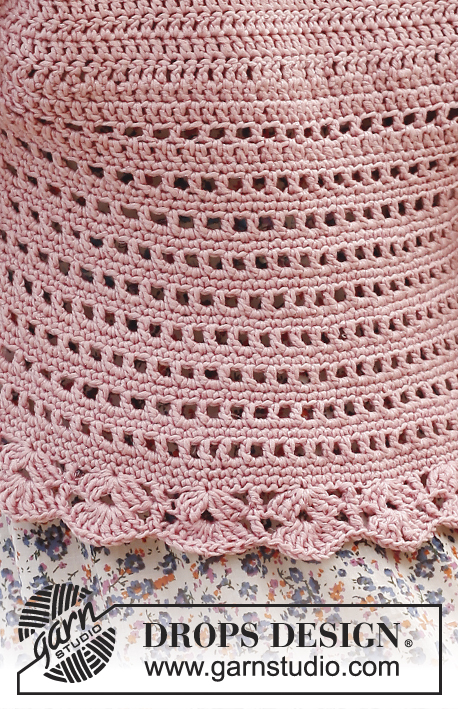


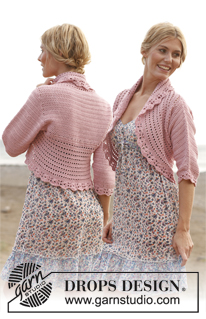


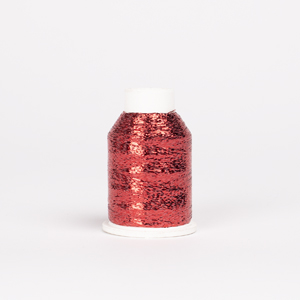
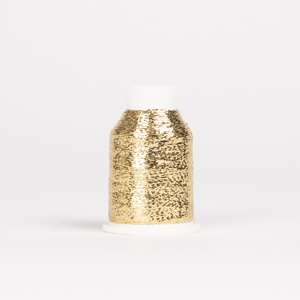

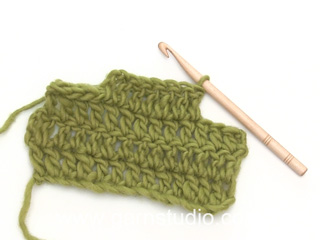

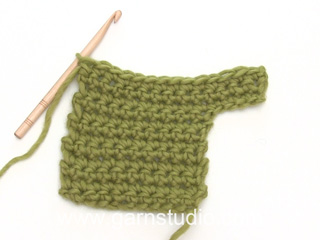





















Comments / Questions (186)
I'm very new to crochet, and don't understand what I'm doing on the chain going into the tr crochet on the second row. Your notes say chain 3 for first tr and then tr into 4th ch stitch which I've done, then tr 3 more mis chain and carry on till 2 sts remain, I have 3 tr at this end and one chain space remaining, my count of tr stitches is 59 if i include the first chain 3, I've taken it out 3 times, and am carfully counting as i go, I don't understand where it is going wrong.
19.04.2020 - 18:28DROPS Design answered:
Dear Caroline, in first size you have 78 chains, then crochet 1 tr in 4th ch from hook (= 2 trebles, 6 chains), then repeat (1 tr in each of the next 3 ch, skip 1 ch) a total of 18 times ((= 3 tr, 4 chains)x 18 = 54 tr, 72 chains), finish with 1 tr in each of the last 2 ch (2 tr, 2 ch) you have now: 2+54+2 tr over 6+72+2 chains. Hope this helps, happy crocheting!
20.04.2020 - 10:41Hello, i'd like to try making this, is there a possibility if i work the sleeve in round? Thank you
18.03.2020 - 06:41DROPS Design answered:
Dear Mrs Fitri, you could start to work the sleeve in the round but to get the same texture for sleeve cap remember to work alternately from RS and from WS - when working sleeve cap you will have then to work in rows decreasing on each side. Happy crocheting!
18.03.2020 - 08:49I a m so confused. The edge piece says you should have 56+56+44+44=196 but then directions says 204. Am I missing something?
06.03.2020 - 21:26DROPS Design answered:
Dear Linda, you work 1 st in each st in the top of back piece = 62 sts + 42 sts in the 56 chains + 1 st in each st in the bottom of back piece = 58 sts + 42 sts in the 56 chains = 62+42+58+42=204 sts. Happy crocheting!
09.03.2020 - 09:40The pattern is very nice n have completed making the body and edging . In sleeve part , what will be the count of stitch in the last line? Is it possible to send pics of just the sleeve to see the shape that v achieve afterall the decreases.
01.02.2020 - 22:12DROPS Design answered:
Dear Mrs Namrata, the number of stitches at the end of the sleeve (sleeve cap) will depends on your tension in height. Just make sure that you decrease the same number of stitches on each side and that the measurements are right. Happy crocheting!
03.02.2020 - 09:54I was confused with the edge piece, if i ch 58 and in each ch loop ill do 44 tr, how will get the total of 220 tr?
01.11.2019 - 17:44DROPS Design answered:
Dear Zhell, you crochet 44 tr in the 58 ch (skipping chains evenly) = 44 tr; then 1 tr in each of the 64 tr from the bottom of piece, then 44 tr in the 58 ch = 44 tr and 1 tr in each of the 68 tr on top of back piece = 44+64+44+68= 220 tr. Happy crocheting!
04.11.2019 - 15:28If I used DK yarn and did not add the metallic thread, might this affect the size or could I possibly correct it by using a thicker thread to begin with?
23.08.2019 - 00:07DROPS Design answered:
Dear Mrs Smart, read more about alternatives here and use our yarn converter - DROPS Glitter just give a glitter effect and doesn't affect tension. Happy crocheting!
23.08.2019 - 09:22Bonjour, Une fois que le dos est terminé, d'où est-ce qu'il faut commencer pour faire la bordure? Merci!
07.08.2019 - 14:51DROPS Design answered:
Bonjour Mme Richard, vous continuez à crocheter dans les mailles du dernier rang du dos: 1 B dans chaque B, puis crochetez les mailles en l'air, 1 B dans chaque B le long du bas du dos, crochetez les mailles en l'air et fermez en rond avec 1 mc dans la 3ème ml du début du tour, crochetez ensuite 1 rang de brides = 204-248 B. Bon crochet!
08.08.2019 - 09:12Bonjour, Comment fait-on pour assembler les manches au dos? Merci!
01.08.2019 - 17:47DROPS Design answered:
Bonjour Mme Richard, placez les manches avec la couture sous la manche en bas du dos, la maille centrale de la manche doit être en haut de l'emmanchure - cf schéma. Assemblez ensuite les mailles de l'arrondi de la manche le long des emmanchures, vous pouvez épingler avant de faire la couture pour bien placer toutes les mailles/rangs les uns contre les autres et que la couture soit plus nette. Bonnes finitions!
07.08.2019 - 09:22Hallo, kan ik de mouwen van deze bolero ook langer maken tot lange mouw, zo ja, hoe?? Mvg Gerrieneke
13.07.2019 - 11:11DROPS Design answered:
Dag Gerrieneke,
Je zou dan op kunnen zetten en eerst een aantal toeren zonder meerderingen kunnen haken, dus dat je de meerderingen vanaf de elleboog haakt.
24.07.2019 - 08:30Det står att man ska ha 204 maskor runt kanten och sen öka 30 jämnt fördelat över varvet = 294 maskor. ska man öka 30st till 234st eller 90 till 294st mvh Lotta
20.06.2019 - 19:31DROPS Design answered:
Hei Lotta. Du skal øke 30 fastmasker, og dette skal du gjøre 3 ganger: første gang når arbeidet måler 5 cm, neste gang når det måler 10 cm, og siste gang når det måler 15 cm - altså hver 5 cm. Hver gang du øker skal du øke 30 fastmasker jevnt fordel. Når du har økt 3 ganger har du derfor økt tilsammen 90 fastmasker. God fornøyelse
21.06.2019 - 13:36